




As the Su-27 entered service with the Soviet Air Forces in the mid-1980s, Soviet naval planners began working on a carrier-based version of the fighter to serve aboard the Admiral Kuznetsov. This new variant, initially designated Su-27K, began development in 1984, with its first flight taking place on 17 August 1987. To prepare the aircraft for carrier operations, engineers redesigned the airframe with reinforced landing gear, folding wings and stabilators, an arrestor hook, and added canards to improve control during low-speed approaches. After a series of carrier trials and further refinements, the aircraft was officially designated Su-33 and formally entered service with the Russian Navy in 1998.
Introduced in Update "Storm Warning", the Su-33 is a navalized variant of the Su-27 Flanker designed for carrier operations. It retains much of the Su-27’s core performance while incorporating structural changes like canards and strengthened landing gear for carrier suitability. The Su-33 boasts a large missile capacity, able to carry up to 12 air-to-air missiles, including R-73s for short-range IR engagements, R-27ERs for mid-range radar engagements, and R-27ETs for extended IR engagements.
While it lacks thrust vectoring and has somewhat middling manoeuvrability compared to more agile NATO counterparts like the F-16 or Gripen, the Su-33 remains a capable dogfighter thanks to its large airframe and stable low-speed handling. Its avionics suite includes a modern radar, IRST, improved RWR, HMD, and a ballistic computer, allowing it to perform well in both air-to-air and multirole scenarios. One of its key limitations is the relatively low number of countermeasures, with only 48 available, which can leave it vulnerable during prolonged engagements.
flaps
flaps
flaps
brake
| Belt | Belt filling | Armor penetration (mm) at a distance: | |||||
|---|---|---|---|---|---|---|---|
| 10 m | 100 m | 500 m | 1000 m | 1500 m | 2000 m | ||
| AP-T/HEF-I | 55 | 53 | 45 | 37 | 31 | 25 | |
| AP-T/HEF-I/APHE/HEF-I | 55 | 53 | 45 | 37 | 31 | 25 | |
| AP-T/APHE | 55 | 53 | 45 | 37 | 31 | 25 | |
| AP-T/HEF-I/HEF-I | 55 | 53 | 45 | 37 | 31 | 25 | |
| APHE/HEF-I/HEF-I | 42 | 40 | 34 | 28 | 23 | 19 | |
| Name | Weight | Slot | ||||||||||||
|---|---|---|---|---|---|---|---|---|---|---|---|---|---|---|
| 105 kg |  |  |  |  |  |  | ||||||||
| 350 kg | 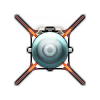 |  |  |  |  |  |  |  | ||||||
| 343 kg | 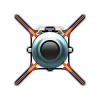 |  | ||||||||||||
| 20 × | 376 kg |  |  | |||||||||||
| 5 × | 505 kg |  |  | |||||||||||
| 370 kg |  |  | ||||||||||||
| 367 kg |  |  | ||||||||||||
| 367 kg |  |  | ||||||||||||
| 40 × | 752 kg |  |  | |||||||||||
| 10 × | 1,010 kg |  |  | |||||||||||
| 2 × | 740 kg | 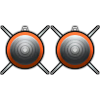 |  | |||||||||||
| 2 × | 734 kg |  |  | |||||||||||
| 2 × | 734 kg |  |  | |||||||||||
| 6 × | 684 kg | 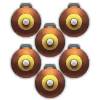 |  |  | ||||||||||
| 268 kg |  |  |  |  | ||||||||||
| 6 × | 1,608 kg | 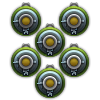 |  | |||||||||||
| 227 kg | 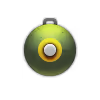 |  |  |  |  |  | ||||||||
| 275 kg |  |  |  |  |  |  | ||||||||
| 508.3 kg |  |  |  |  |  |  | ||||||||
| 515 kg |  |  |  |  |  |  | ||||||||
| 374 kg |  |  |  |  |  |  | ||||||||
| 2 × | 228 kg |  |  | |||||||||||
| 2 × | 536 kg |  |  | |||||||||||
| 2 × | 454 kg |  |  | |||||||||||
| 2 × | 550 kg |  |  | |||||||||||
| 2 × | 1,016.6 kg |  |  | |||||||||||
| 2 × | 1,030 kg |  |  | |||||||||||
| 2 × | 748 kg |  |  | |||||||||||
| 5 × | 570 kg |  |  | |||||||||||
| 5 × | 1,340 kg |  |  | |||||||||||
| 3 × | 825 kg |  |  |  |  | |||||||||
| 3 × | 804 kg |  |  | |||||||||||
| 3 × | 342 kg |  | ||||||||||||












Flight performance | |
|---|---|
Survivability |
|---|
Weaponry | |||
|---|---|---|---|